#Axiom Verge 2
Explore tagged Tumblr posts
Text
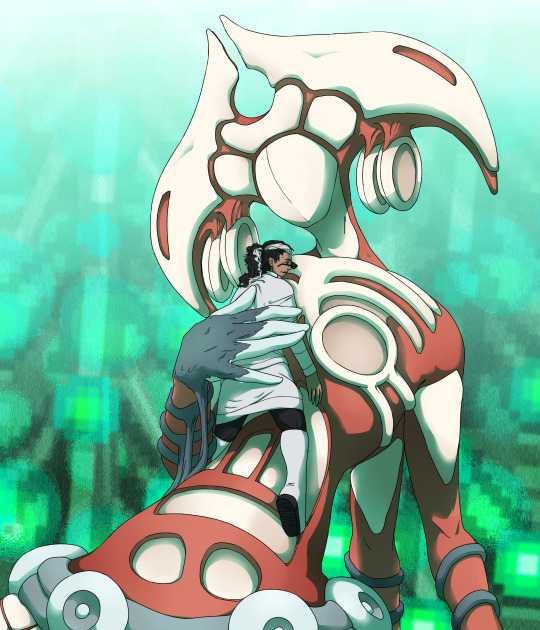
Commission of Indra and Amashilama from Axiom Verge 2 :D
Alt. bg and transparent bg under the cut

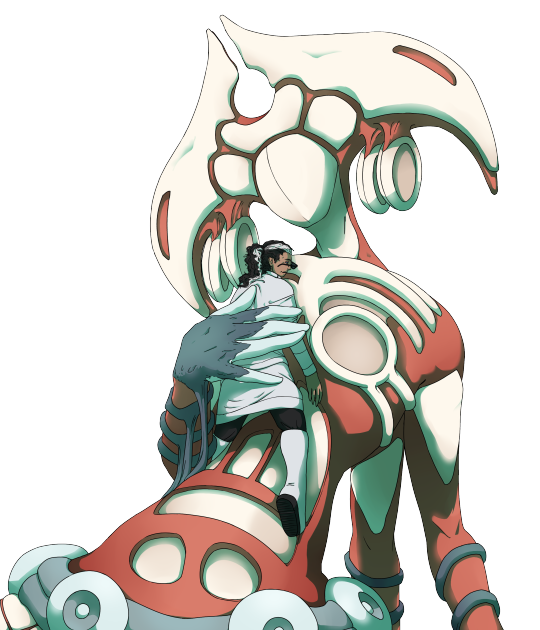
#Thanks again Maja!!#axiom verge 2#axiom verge#indra chaudhari#indra#axiom verge indra#amashilama#axiom verge amashilama#axiom verge arm#commission#art commission#digital art
64 notes
·
View notes
Text
The Axiom Verges
(Axioms Verge? I ‘unno. Spoilers)
This metroidvania duology is a neat little couple of games I’m happy to have happened upon. I beat the first game a few years ago and just this week beat the second one. I shall talk about both.
As I understood, Axiom Verge stood out by having some cool, non-traditional MV upgrades. No double or wall jumping, no crawling or balling, and some unconventional weapons. I liked it. My prior MVs were almost entirely Metroid and Castlevania, so the freshness was extremely welcome. Not to mention that AV’s pixel art is INCREDIBLE! I LOVE giant bio-mechanical beings and I LOVE every gross, writhing detail of their bodies. It makes me wanna puke in the best way possible— like Akira. I don’t really remember the story… but the final boss was interesting, unconventional and rather skill-less to fight.
Axiom Verge 2 was much of the same; still fun and still an enjoyable experience. Again I don’t get much of the lore, even if someone explained it to me. All I understood was that the protagonist is a dirty billionaire, but she cares for her daughter— and prevented the Murder of the Universe ;) i guess. Balancing felt good, didn’t feel like I got too OP too fast, and the exploration was really neat! I liked going into the breach as the drone a bunch; great way to discover little secrets here and there. Pixel art is amazing once again! I would say something about the bosses except there really weren’t any :\. They were more optional combat “challenges” than a true obstacle that stood in your way. I am not for that choice too often. I want a boulder in the path; a fucking steel door. Let me bash my head into it for 3 hours trying to figure out the strategy !! (only slightly exaggerating)
It was clearly left open for a third game, and I will certainly play it if/when it comes out!
#axiom verge#axiom verge 2#metroidvanias#indie games#I love that little drone#he’s my fren#also that lab coat#it’s also my fren#my phasing through walls friend#not omori
12 notes
·
View notes
Text

damu
12 notes
·
View notes
Text
Wakes up in a cold sweat
Axiom Verge 1 is a subversion of the classic masculine power fantasy, while Axiom Verge 2 subverts the classic feminine one.
Hear me out. First let's define both really simply. The masculine power fantasy is essentially one of becoming one's own self, and exerting their power upon the world in their name. The feminine power fantasy is one of union, nurturing and caring for another. We can further simplify these ideals into two lines. The masculine power fantasy is to kill the father. The feminine is to save the daughter.
That's the most barebones description but it's just to get us off on the right foot. Essay below the cut going into detail
In AV1 we follow Trace. All along we're set up with a simple idea, Trace must survive, grow to master his environment and his abilities, and go on to slay his foes. The Rusalki.
Wait what?
Yes, the Rusalki are a controlling force on Trace. For him to fight his way into the masculine power fantasy he must use his power to buck the control of another and choose for himself what is right. But that's not what happens. In fact, he works with them. Why?
Athetos is the final position, the ultimate masculine form of Trace. He makes clones of himself and each fail to become. They're stripped of name and identity and these "lesser selves" are now subservient only to Athetos. The Father. The Master. If Trace wishes to become a man, he must prove himself unconquerable and stand evenly with Athetos.
That's the nightmare segment. We see Trace literally chasing after an ideal self he can't keep up with. We see him become one of the failed clone monsters and experience being a puppet, it's the masculine nightmare. He is a failure, he will be subsumed, he must become his perceived ideal self.
But it's all a trap. Trace doesn't just man up and beat the toxin that's mutating him. He has help from Ophelia. See, there's been a secret this entire time in the background, have you caught it?
When Trace finds his mutated other selves, he tries to reason and they will not listen. They're caught up in the masculine narrative and there are only two ways out of it. Destroy Athetos, or change the script.
Trace, who has been nurturing and healing the Rusalki despite their power over him. Trace who has to use his understanding, and for whom a boss fight isn't glorious single combat. Trace who bears the ultimate yonic symbol in the Axiom Disruptor. Guns are generally phallic symbols but this one's design but this one disrupts (heh) the narrative symbology to a different one.
Empathy, sacrifice, and grace are often hallmarks of the feminine power fantasy. There is much to be said about whether these are healthy themes but for now, in present moment, that's often what they are. It is in showing empathy to his failed clones that he finds purpose beyond meager violence to face Athetos. It's through empathy that he connects with Elsenova and the other Rusalki who then grant him the power of making connections to defeat his foe. He sacrifices his own pride and it allows him to see the world for what it truly is rather than a playground to be remade in his image. The address disruptor may seem a tool to do just that at first, but in actuality it cannot change what has not already been changed. Most of all, he sacrifices his ultimate masculine form in Athetos, refusing to become powerful to become understanding. His method is not to subjugate his potential lesser selves and become the standout example but simply to be, in the world he is in.
Indra is taken by the hand along the path of the feminine. She comes to rescue her daughter and must work under the mercy of the Arms. A class of people who have power, and power over her as a kind of patriarchy. Indra! A world-class CEO is now a victim of a system and a culture that simply doesn't value her for what she is.
And just like Trace, the further she goes along this path the more misled she is. She is expected to sacrifice everything, even her life for her daughter. She must care for Damu and balance catering to the desires of the figuratively-masculine Amashilama.
Trace suffered being the victim of toxic masculinity. Becoming isolated and dejected and discarded. Indra becomes the victim of toxic femininity, sacrificing until there is nothing left to give. She is used for her body and her mind is a discarded, useless thing. But it is from that mind that Indra flips her own script.
She remakes her body in her image, as she likes. Have you noticed the hacking tool that makes her the master of her demesne? The phallic symbol of the ice pick? Each tool she has leads her closer to her destiny and the more she makes a name for herself the more empowered she becomes, to the point she makes her own name for herself in the world. Everything Indra is given puts her in the position of that brave and empowered masculine, even and especially, the ending.
Should I talk about how Indra's body is used so that Amalshilama can get at her real goal? The next generation of Arms. How she is literally used to produce and bequeath the next age to the patriarchal Arms? At how Indra's past self takes on the feminine role of sacrifice and fulfills the idea of motherhood by reuniting with her daughter, and how that leaves our mechanical Indra free to pursue her name? (Presumably Ophelia?)
Indra's pursuit saves her life, in a sense, and she becomes greater than the simple story she was placed into. As Trace did. As they both did and in so doing did not become victims of masculinity and femininity. In fact, all throughout their games they win by pushing past the constraints humanity would place on them.
And just. AUGH. The symbolism! The way Trace carries larva on his back being "injected into". The way Indra is given actual soldier's weaponry. The way Sudra is still until the Disruptor is picked up, almost a symbol of beginning life. The way Indra seeks a way to allow Damu to build a body and follow in her example. To literally make himself.
Axiom Verge is so good actually.
#axiom verge#axiom verge 2#trace eschenbrenner#trace av#indra chaudhari#indra av#essay#gurl i could write a thesis about these games now#where's the third where we create the divine hermaphrodite#or did we do that twice already#ophelia#the music is cool in these games go check that out if you haven't#but if you haven't then why are you here#basically axiom verge is a subversion of common storytelling and is all the better for it
6 notes
·
View notes
Text
So, I had this in my drafts for about a month. I've been building theories off this post that I never posted:
My entire understanding of Axiom Verge changed when I found the Breach Attractor. As it turns out, this was NOT Athetos' invention, but a Sudran device.
I've stated before that Athetos must have built his devices based on Sudran tech. For one thing, I don't think Athetos designed all the upgrades for the Axiom Disruptor; I think it's more likely that he designed the AD to be compatible with Sudran upgrades (we know, for instance, that the flamethrower, or "dinger-gisbar" is a Sudran device and not something that Athetos built).
This also explains something that puzzled me all throughout the first game: how did a theoretical physicist manage to engineer biomechanoid technology??? These involve multiple different skillsets and fields of study and expertise. Even if Athetos had hundred or thousands of years to learn, it's still somewhat doubtful that he would have been able to do it by himself.
BUT it would have been a lot simpler if he was using Sudran texts and blueprints to work from. We know from AV2 that the Sudrans merged human minds with their "Arms," and that they invented the drone technology that we know and love from AV1. We also know that it was even more sophisticated than what we saw in the first game, with the ability to transfer from human to drone and back, without the somewhat janky mechanics of the drone teleport.
Over the course of several hundreds or even thousands of years, due to the way the Breach slows down time, Athetos was able to both learn and translate Sudran text (as well as Vykhyan). But Athetos also mentions, in one journal page, that the Sudrans also invented a programming language.

(If there actually is an IRL programming language called "Sudra" or "Sudran," let me know. I looked it up and couldn't find anything.)
So it's not impossible that Athetos learned how to work with the Sudran programs, and just designed the AD around those programs.
He probably got the Breach Attractor from Ophelia. She's the one who had it first.
25 notes
·
View notes
Text
So I finished Axiom Verge 2
A little while ago, actually. I didn't post about it at the time because I didn't (and still kind of don't tbh) have any hugely profound thoughts about it, but I recently played through and beat Axiom Verge 2.
I'm not sure what it's missing but it feels as if it's lacking something of the original. Still a decent game; interesting exploration, gorgeous pixel art, unique abilities, and if nothing else the soundtrack still freaking hits. More thoughts under the cut including spoilers for both AV1 and 2.
Tl;dr Overall, I liked it. Not a bad game, but I feel some story stuff was a bit fumbled. Not to any critical degree but it's the sort of thing that's noticeable if you're looking for it.
If you liked the first one, give it a look. It has some interesting implications for the overall lore of the Axiom Verge universe. I found the overall gameplay enjoyable, upgrade-hunting and getting to pick your progression is neat, the changes to the hacking mechanic are implemented well and create a sort of secondary resource management loop that's pretty clever. And of course the soundtrack is excellent, I'd say overall more listenable casually than AV1's.
To get into the story stuff, I feel like some of the major story beats were a bit fumbled in AV2 compared to the original. AV1 plays to the strengths of the game whose skin it's wearing - mimicking Super Metroid's vibe of (near-)total isolation by presenting Trace's presence on Sudra as a mystery in itself to be solved by exploring. With the help of some cryptic supercomputers, of course; the iconic Rusalki feature prominently in AV1's promotional art, and are introduced early on in the game's story as a constant background presence.
By contrast in AV2, while Indra ends up in Kiengir by accident, she goes to the location of the portal very much on purpose. I feel like Indra's motivation to find her estranged daughter is kind of... weak? In the very brief intro and in a few of the notes scattered around, she's presented as a driven, rather cold, corporate powerhouse type. I think the lengths she goes to during her adventure would be more interesting if her motivation was solely to figure out what Hammond and the other scientists had been up to in Antarctica and Kiengir. Especially given how AV2 ends, it's clear her motivations are still mostly self-interested (Though I did like that she seemed to soften a bit dealing with Damu and learning the plight of the other Arms, I feel like that arc leading to some reconciliation with her daughter Samara maybe got abbreviated for time.) I wasn't overly bothered by the lack of "isolation"/the presence of other humans, I thought it was interesting to see what the other trapped researchers got up to and how the various factions interacted. Talking to the other people also lets the player see a bit more of Indra's character, which isn't a bad thing. (Also, the way a lot of these interactions are written supports my point that her motivation could have been left as solely selfish and still been compelling. It felt like the team didn't want to fully commit to Indra just being kind of an unpleasant person...)
My other story gripe is the freaking Lamassu. I feel like the Lamassu's presence was predetermined by how the team wanted to market AV2. Like it was the first thing they came up with, visually. Its presence and presentation are engineered to stand in contrast to AV1's promo material. Trace, a tiny male figure, standing in a darkened space before the looming, Giegeresque feminine figure of a Rusalka is the striking imagery that was AV1's visual hook. In all the AV2 promo imagery, the small feminine Indra stands among the clouds face-to-face with the Babylonian-bearded masculine Lamassu. (Both compositions even have their figures facing opposite directions!) It feels like all the visuals of that beat were predetermined, while its actual story significance was secondary to that.
You meet the Lamassu basically halfway through the game and the first thing it does is tell you to off yourself because you're infected with nanotech, then basically refuses to help you. It pops up a few more times to guide you around, but doesn't have the kind of distinct personality the various Rusalki did. It's supposed to be a being of pure logic, and that quirk comes up a little bit in that it runs into some internal conflict over the course of the story, but I feel like that, too, was underutilized. (Though admittedly there is some unintentional comedy to the lost, grumpy Indra finally happening upon this fabled, supposedly benevolent AI overmind and the first thing it says to her is basically 'kys'.) In AV1 the Rusalki are introduced fairly early by comparison, so the player can get it into their head that they're around. They keep in pretty frequent contact with Trace, they have their own interpersonal conflicts, and even figure directly into some late-game events so their presence is constantly being felt. The Lamassu by comparison is a very hands-off guide who shows up too late to feel as significant as its presence in the marketing material would suggest it is.
Now that I'm done complaining - and truly these are fairly minor complaints, this is just me being nit-picky because I'm a writer and I feel like a few shifts in presentation could really have made this game a gem - I can talk about all the other stuff!
The optional "bosses" thing was an interesting choice. They're required for 100% items but otherwise are totally avoidable, with the exception of two, maybe three "bosses" that are sort of in the way and would require very careful play to avoid. One of them however is not directly aggressive, and is more of an environmental hazard that slowly follows you around. (This one is also a very cool puzzle and is one of my favourite challenges in the game, on reflection.) The game's hacking mechanic does foster the option for pseudo-pacifist play, with the ability to slow or disable, or even flip the allegiance of most common enemies.
There's also a sort of secondary resource management thing that encourages hacking. Some enemies drop these little canisters of nanite stuff that can be used to do a few different things. The canisters themselves can be hacked to become volatile on-hit, to explode when hacked, or to drop a bit of health. A bit later after encountering these types of enemies, the player gets the ability to pick up and carry these canisters and consume them to restore health on-demand. This creates a choice between hacking enemies to get them to drop their cargo and stealing that for later, or hacking the cargo itself to explode those enemies (many of which are a bit difficult to kill for one reason or another, so the choice isn't always obvious!)
I liked the changes to the Breach as well. Rather than being an extra-hard corner of an area you could loot for goodies, the Breach is now a Link to the Past/Between Worlds-esque mirror-realm with its own internal progression, enemies, and playstyle (as you can now only access the Breach via your remote drone). Flipping between the Breach and Kiengir and manipulating your position via portals becomes a major component of mid-late gameplay, especially if you're going for 100% items. It's also... I don't know how else to say this but, cute? that the whole breach dimension is at a lower resolution than the main area. Everything feels small and cute, and a lot of the enemies are re-used from AV1 so it's a fun little homage-dimension in addition to being an actually challenging part of the game. (Also training the Player how to maneuver and fight in drone mode before the mid-game thing-that-happens by doing a lot of Breach stuff was a clever choice. Good job devs, I see what you did there.)
And of course I have to gush about the soundtrack real quick because this is getting to be a long post. It's good. It's real good. I like that Happ leaned into the Mesopotamian aesthetic by also choosing some Middle Eastern-sounding instruments to go along with the main chiptune-y compositions. It works really well, imo. Each area has an overworld and a Breach version of its music, which can be quite different! (ie. Not just "covers" of one another but separate melodies and progressions in some areas.) The Breach tracks are much chirpier and exclusively chiptune, while the overworld tracks have (midi) instruments and actual vocals (there's a vocalist credited in-game and in the OST, which is cool bc all the vocals in AV1's OST were just samples!) I also really like the two bonus tracks included in the OST. "Ancient Axiom" is a cover of AV1's main theme with the traditional instruments plus chip drums (which if I'm being honest I may have to choreograph something to, it's so good), while "Afterworld Axiom" is a catchy medley of the two games' main themes.
Anyway, until next time!
#sable talks about games#sable has a take#axiom verge#axiom verge 2#let 👏Indra 👏be 👏mean👏#diversity win! this tech billionaire is an elderly WOC and kind of a jerk!
2 notes
·
View notes
Text
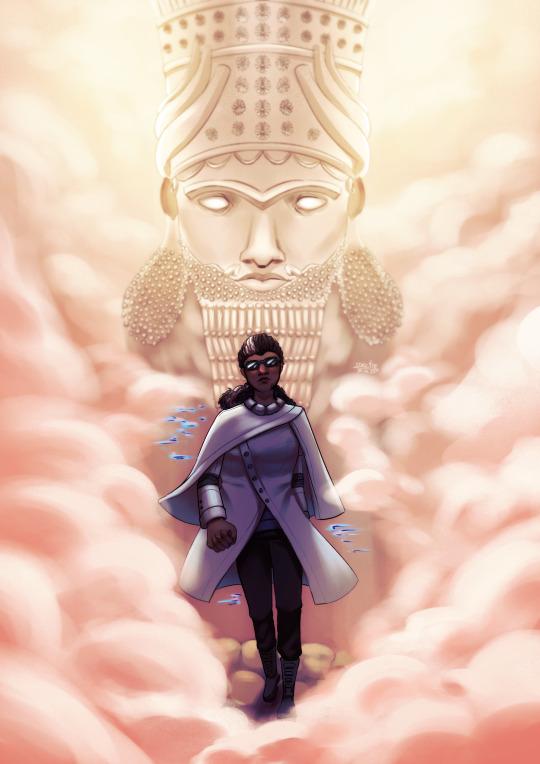
a followup to my axiom verge poster. same composition, different game
51 notes
·
View notes
Text
Doing my first stream today im streaming axiom verge 2
twitch_live
2 notes
·
View notes
Text
It is 2021, and there is time for Axiom Verge 2!
Ultimately I think Axiom Verge was the better game in terms of its appeal to me, personally. I felt like the story was paced better, if nothing else. That said, Axiom Verge 2 has its charms, and I was never mad at it, just kind of disappointed at where the story cuts off. I feel like I had to look up a few more solutions than I did with the first one, too, but that might be an artefact of my changing habits regarding looking things up.
Reading up on lore speculation and getting 100% map/item completion has made me appreciate it more. I also like how the fact that it makes your drone form the more fun one to explore with, what with its better movement capabilities, ties into its transhumanism themes. And I always love a good alternate realities mindfuck.
About the only complaint I have besides "wow, that was fast" re: the story is: why was this track not the title theme or at the very least included in the game somewhere instead of being relegated to a bonus track on the OST?
youtube
A remix of the first game's title theme in an Ancient Mesopotamian style, matching the new (and fantastic) direction of the music? With the same gloomy vibe? Come on!
The existing title theme is catchy, but much too cheerful, I think, and doesn't really reflect the music of the game proper, which mostly alternates between Ancient Mesopotamian/folky and NES-style chiptune.
youtube
...But anyway, I recommend it for fans of Metroidvanias and the first one. I enjoyed my time with it.
12 notes
·
View notes
Photo


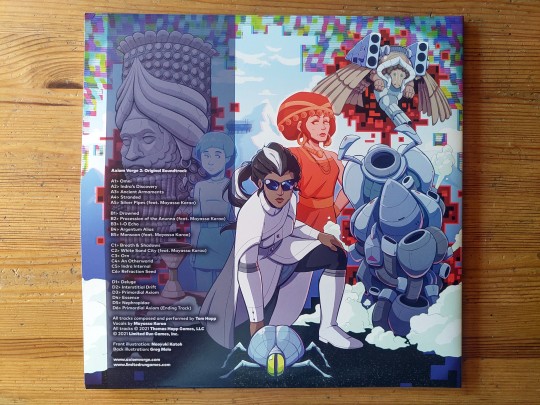

Thomas Happ - Axiom Verge 2 Original Soundtrack | Limited Run Games | 2022 | Black
#thomas happ#axiom verge 2#limited run games#vinyl#black vinyl#lp#music#records#record collection#vgm#video game music#soundtrack#thomas happ games#axiom verge#greg melo#naoyuki kato
16 notes
·
View notes
Text
youtube
Monsoon - Thomas Happ ft. Mayssa Karaa, Axiom Verge 2 OST
2 notes
·
View notes
Text
do you ever start a videogame and then stop playing it midway through and then pick it up again 3 years later barely understanding the story or mechanics anymore, but then you finish the game and get obsessed with it and wonder why you stopped playing it in the first place??
#video games#axiom verge 2#pathologic 2#hyper light drifter#this happened to me so many times already#why can i not play games like a normal person
4 notes
·
View notes
Text

#pixel art#jill does art#pixel quilt 2025#final fantasy 6#kingdom hearts ii#axiom verge 2#water womb world#no case should remain unsolved#persona 4 arena ultimax#alan wake 2#astro bot#persona 5 dancing in starlight#persona 4 dancing all night#persona 3 dancing in moonlight#radiant historia
5 notes
·
View notes
Text
Going Live With Axiom Verge 2
We are on the boldest body retrieval mission in Axiom Verge 2 today!
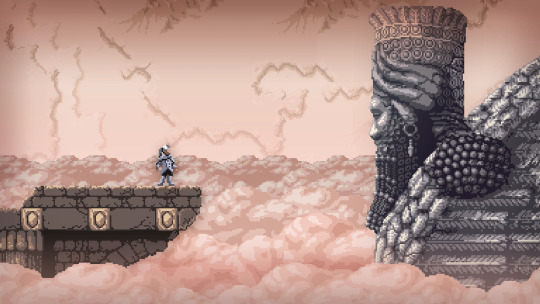
Twitch: KyoStarr
1 note
·
View note
Text
Leitmotif analysis:
Alarms are used in Trace Rising, Apocalypse, and Indra Internal (feel free to check the rest of the OST's for both games and see if I missed any). The alarms are practically the first thing we hear in all of these songs. All of these are boss fights in which the protagonist, whether Trace or Indra, are fighting their doppelgangers. I am not certain yet whether this is simply a style choice, a message to the players, or just a coincidence. Perhaps future AV games will provide more insight (hopefully??? this simply can't be the end of the series, there's too many unanswered questions).
#and all 3 are simply BANGER boss themes#but then again both full soundtracks are bangers#leitmotif#axiom verge#axiom verge 2
6 notes
·
View notes
